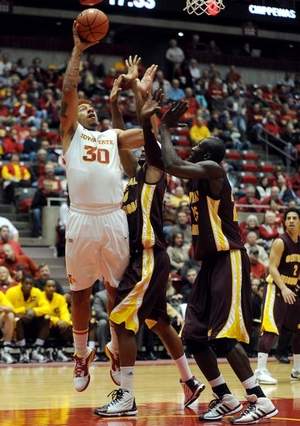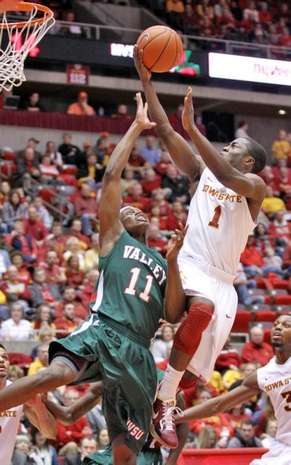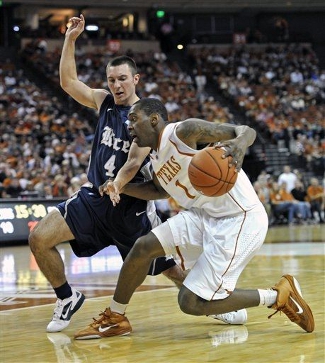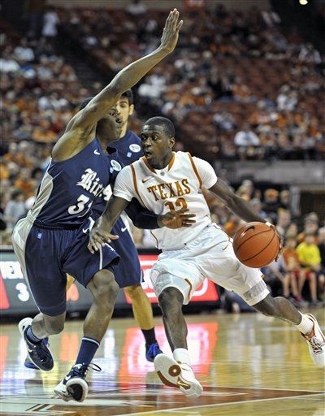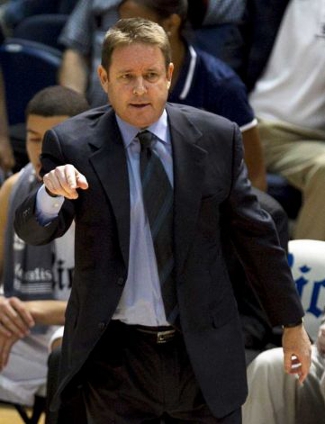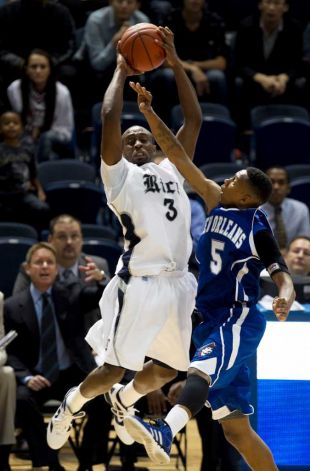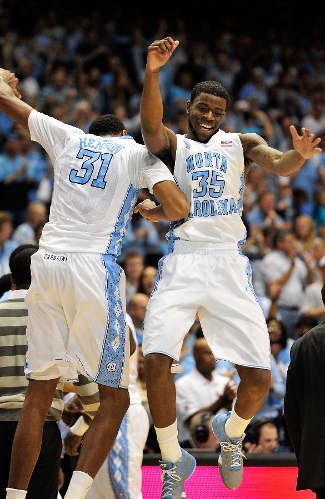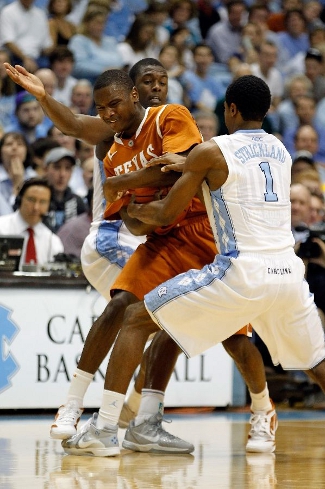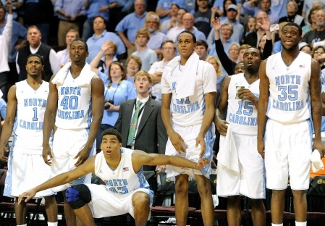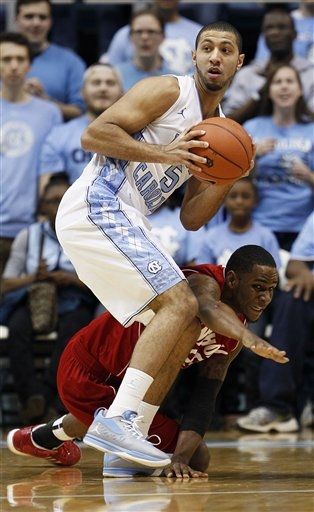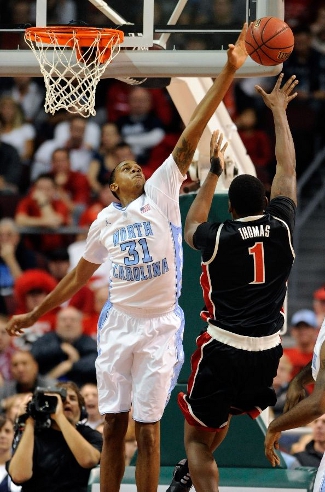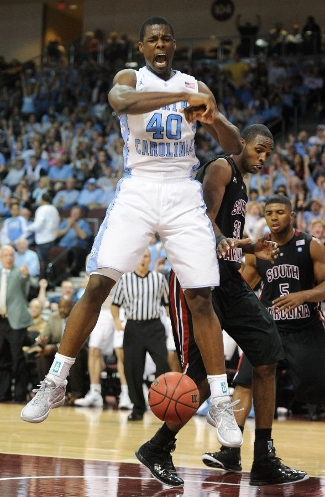Hilton Coliseum | Ames, IA | Tip: 8 P.M. CT | TV: ESPNU LRT Consecutive Game #200 For Michele Bachmann, last night’s Iowa caucus was the end of the road for her 2012 presidential campaign. On the other end of the spectrum, frontrunners Mitt Romney, Rick Santorum, and Ron Paul didn’t lock up November’s general election, but kept themselves alive by proving contenders to 120,000 farmers in America’s heartland. That seemingly random intro leads us to this awkward segue, where we make the leap that for the Texas Longhorns, tonight’s conference opener at Iowa State provides a test similar to the Iowa caucus. A game that is seemingly inconsequential on paper — much like the opinions of 120,000 people in a country of 300-million — could prove huge in Texas’ pursuit of an NCAA bid. While a ticket to March Madness pales in comparison to a national party’s ticket to the general election, it’s clear that how Texas performs tonight will set the stage for conference play. The Longhorns finished non-conference with a solid 10-3 mark, but lack any signature wins to beef up their NCAA résumé. The victory over Temple came when the Owls were lacking two star players, while a road win at UCLA is tarnished by the pathetic season the Bruins are stumbling through. In a very deep and balanced Big 12, the Longhorns will be tested every single night, and have to take the wins wherever they can get them. While the Cyclones are a scary (but inconsistent) team and Hilton Coliseum is not an easy venue to steal a win in, tonight’s game approaches must-win territory when you consider that the Longhorns have to play two games each against Baylor, Kansas, and Missouri.
Defenses are having a hard time stopping Royce White By the numbers Iowa State is near the top of the charts when it comes to three-pointers, and that’s clearly by design. Coach Fred Hoiberg typically has four players spread out on the perimeter, and often even moves big man Royce White (No. 30) to the top of the key for ball screens and iso plays. As a result, the Cyclones take nearly 43% of their shots from behind the arc, the 17th-highest percentage in the nation. Fortunately, Iowa State is very streaky from behind the arc. On the year, they are making 37.8% from long range, which puts them in the Top 60 nationally. But when you break those numbers down, it’s clear that the Cyclones are a perfect example of the “live by the three, die by the three” cliché. In the team’s three losses — to Drake, Northern Iowa, and Michigan — they made just 16-of-64 (25%) from beyond the arc. In their ten wins, they sank 41.3% of their attempts, averaging just under 10 makes per victory. The Cyclones also earn a fair share of points at the line, with more than 17 per game coming from free throws. Combining all of those freebies with the three-pointers means that just 42.3% of Iowa State’s points come from inside the arc. While that may seem like a large percentage, there are only 11 teams in the country who score less points from two-point range. As would be expected, the bulk of the team’s free throws come from White getting fouled down low. Beyond that, there are some surprising numbers coming from guard Bubu Palo (No. 1), a former walk-on from Ames who has finally earned a scholarship for the spring semester. Palo draws an average of seven fouls per 40 minutes, and has an improbably high free-throw rate of 192.9%, meaning he shoots almost twice as many free throws as field goals. Meet the Cyclones As you could likely guess by this point, as Royce White goes, so go the Cyclones. At 6’8″, 270 pounds, he’s a remarkably big guy who was voted Big 12 Newcomer of the Year despite not playing a competitive game of basketball in over 900 days. White won a state title as a high schooler in Minnesota and elected to play close to home for Tubby Smith and the Golden Gophers. Unfortunately, he never played a single game there, sidelined by a slew of off the court issues — shoplifting at the Mall of America, assault of a mall security guard, and the theft of a laptop from a Minnesota dorm room. With a fresh start at Iowa State, White has been able to show off his impressive skillset. Despite the big body, he is a deft passer and pretty good ball handler, giving Coach Hoiberg more flexibility on the offensive end. With that unusual blend of talents, White is tops on the team in points (13.1 per game), rebounds (8.9), and assists (3.9). He hardly played in the team’s last game thanks to flu-like symptoms, but should be back to full strength after three days of rest. With defenses paying so much attention to White, that opens things up on the perimeter for the Cyclone guards. Chris Babb, a 6’5″ transfer from Penn State, is knocking down 36.4% of his long range attempts. He’s primarily a perimeter player, with nearly 80% of his shots coming from beyond the arc. Babb’s length in the backcourt is also a great boost on defense, and provides the Cyclones with an edge on the glass. He also runs the floor really well, which is huge for a team that can sometimes get bogged down in its half-court sets. While Babb is seemingly glued to the perimeter on the offensive end, the team’s true marksman is senior Scott Christopherson (No. 11), who has made more than 40% of his attempts so far this year. Shockingly, that number actually represents a decline for the senior, who boasts a career three-point mark of 43%. It’s also worth noting that even Christopherson fits with Iowa State’s Transfer U theme, as he played his freshman season at Marquette in his home state of Wisconsin. The third guard in Iowa State’s starting five is former Michigan State Spartan Chris Allen (No. 4), who is the closest thing the team has to a starting point guard. Although White can bring the ball up the floor and is the top assist man, Allen is generally the one setting the table on offense. Like Babb and Christopherson, the senior is a threat from outside, where he’s made 35.6% of his attempts. Unlike the other two guards, though, Allen can create shots for himself off the dribble, and does a good job attacking the paint on the bounce to get the defense moving. Rounding out the starting lineup is Canadian product Melvin Ejim (No. 3), who doesn’t typically put up big numbers, but provides a solid rebounding and defensive presence. In the team’s most recent game, the sophomore was thrust into a bigger role thanks to White’s illness. He responded very well, posting an impressive 15-point, 15-rebound line that included a pair of triples. The Cyclone bench isn’t used for a ton of minutes, but Coach Hoiberg does have instant offense available in the form of Tyrus McGee (No. 25). An All-American at the junior college level, McGee is an exciting player who can create shots without turning it over. Although he averages less than 20 minutes per game, McGee is fourth on the team in scoring with 9.8 points per game and has a turnover rate of just 10%.
Reserve guard Bubu Palo draws a lot of fouls The other primary reserve for Iowa State is Palo, who won the state title in Iowa as a point guard. On a team that lacks a quality floor general, that experience translates into playing time, and he sees the floor for 16 minutes per game. As previously mentioned, Palo does a great job attacking with the dribble and drawing fouls. Unfortunately, he’s not as good when it comes to converting those attempts, sinking just 64.8% of his tries at the charity stripe. Iowa State also has a pair of frontcourt reserves each averaging about 12 minutes per game in Anthony Booker (No. 22) and freshman Percy Gibson (No. 24). Booker is yet another transfer for Coach Hoiberg, coming to Ames from Southern Illinois. He has a serviceable offensive skillset, but typically just produces on the glass and on the defensive end. Gibson was the top-rated high school prospect out of Detroit and had originally committed to Dayton. But when Flyer coach Brian Gregory departed for Georgia Tech, assistant Cornell Mann made his way to Ames. Having been recruited by Mann, Gibson made the same switch and ended up at Iowa State. He’s yet to truly explode, but you can already see his skills. Gibson is a long, lean 6’9″, which makes him more mobile than a lot of other bigs, and that leads to some easy buckets and boards. Keys to the game 1) Lock down the perimeter – Although White is the headlining star on this team, the numbers make it clear that Iowa State wins and loses games behind the arc. The Cyclones will certainly make some threes in this game, but if Texas can limit the damage, they will stand a good chance to win this one on the road. 2) Attack on offense – The Cyclone defense has looked porous at times, falling victim to both dribble penetration and off-ball movement. Teams are constantly abusing them with backdoor cuts, while driving guards often find their trip to the rim is rather easy. If J’Covan Brown and Myck Kabongo play aggressively, the Texas offense should be able to pile up some points. 3) Clean the defensive glass – It’s been a recurring theme in this section of the game previews, but it bears repeating. Texas must limit second-chance points by closing out defensive possessions with rebounds. On paper, Iowa State’s perimeter-oriented attack would seem to make this an easier task, but the ‘Clones are actually one of the 100 best offensive rebounding teams in the nation. The Longhorns have to neutralize White and Ejim on the glass to make sure the sharpshooting Cyclones don’t get extra looks. |








